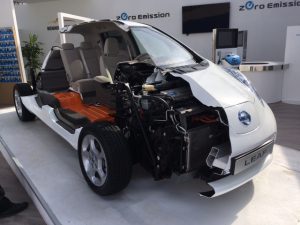
The first week of COP22 – the 22nd meeting of the Conference of the Parties (COP) to the United Nations Framework Convention on Climate Change (UNFCCC) in Marrakech – is drawing to a close. Most days this week have begun with a plenary session, at which country representatives can make statements, outlining their position on key issues. Almost invariably, the statements are general in nature and typically consist of broad pronouncements on uncontroversial issues. To truly understand a country’s position, then, it is necessary to attend the smaller negotiating sessions taking place throughout the day.
Known as “informal consultations,” the negotiating sessions have been proceeding along multiple tracks, covering myriad issues, from planning to finance to technology transfer and more. As the week has progressed, the negotiations have become increasingly intense, with country representatives often engaging in heated debate. For the last few days, most have been closed to observers, presumably to allow country representatives to speak more freely. The hope is that they can reach consensus on draft text, which will be presented for approval at the plenary sessions next week. Even before that occurs, however, COP22 is already living up to expectations that it will be the “COP of Action.”
In addition to a forum for negotiations, COP22 also provides an opportunity for the exchange of ideas on climate change mitigation and adaptation strategies, between governments, companies, and others. The main conference area at COP22, known as the blue zone, includes several large country pavilions, with exhibits showing governments’ achievements to date. Next door, in the green zone, is exhibit space for companies, non-profits, and other organizations. Exhibits have also been set up elsewhere around the city. Many are being used by vehicle manufacturers, such as Nissan and BMW, to promote their latest electric cars and motorcycles.
The need to expand use of electric vehicles and other clean transportation options was a major focus of discussions at COP22 on Friday. At a day-long side event in the blue zone, representatives of national governments, international organizations, and the private sector discussed pathways to decarbonize transportation, so as to achieve net-zero greenhouse gas emissions by 2050. There was optimism that this could be achieved, though many were skeptical that vehicle electrification alone would be enough. They pointed to limitations in current electric vehicle technologies (e.g., limited range) and the long lead-time required for fleet turnover.
In the short- to medium-term, while electric vehicle technology is developing and being deployed, other decarbonization strategies will be needed. During Friday’s side event, participants emphasized the benefits of expanded public transport, lauding New York’s system, use of which avoids seventeen million tons of carbon dioxide annually. New York’s subway and trains were especially popular, with many noting that they transport millions of people daily, reducing road congestion and associated environmental issues. Rail is, however, only as environmentally-friendly as the electricity that powers it.
Recognizing this, Morocco’s national railway operator, Office Nationale des Chemins de Fer du Maroc (ONCF), has announced plans to increase its renewable electricity use. The plan, announced on Friday as part of COP22, involves ONCF sourcing fifty to eighty percent of its electricity from renewable sources. While this will have only a minimal effect on greenhouse gas emissions, as Morocco’s rail sector accounts for just two percent of national emissions, it is nevertheless an important symbol of the country’s commitment to climate action. It also symbolizes what is possible and, like the country pavilions and company exhibits of COP22, may inspire action elsewhere around the world. If that’s the case, COP22 will truly be the COP of Action.
Romany Webb is a Research Scholar at Columbia Law School, Adjunct Associate Professor of Climate at Columbia Climate School, and Deputy Director of the Sabin Center for Climate Change Law.



